Comparative Species
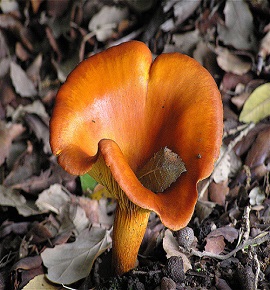
The false chanterelle (Hygrophoropsis aurantiaca)
The false chanterelle (Hygrophoropsis aurantiaca) has a comparable appearance and can be mistaken for the chanterelle. Recognizing elements are shading (the genuine chanterelle is uniform egg-yellow, while the false one is more orange in tone and reviewed, with darker focus) and connection of gills to the stem (the genuine chanterelle has edges or wrinkles, which can be entirely profound, however not genuine gills). In spite of the fact that once thought to be risky, it is presently realized that the false chanterelle is consumable however not particularly delicious, and ingesting it may bring about gentle gastrointestinal distress.The noxious species in the family Omphalotus (the jack-o'- lamp mushrooms) have been misidentified as chanterelles, yet can more often than not be recognized by their all around created unforked gills. Omphalotus is not firmly identified with chanterelles. Different species in the firmly related genera Cantharellus and Craterellus may seem like the golden chanterelle.
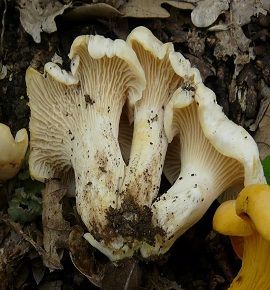
Cantharellus pallens
Cantharellus pallens has at times been characterized as an animal types in its own particular right, yet it is regularly thought to be only an assortment (C. cibarius var. pallens).Unlike "genuine" C. cibarius it yellows and afterward blushes when touched and has a weaker odor. Eyssartier and Roux characterize it as a different animal types however say that 90% of the chanterelles sold in French markets are this, not C. cibarius.
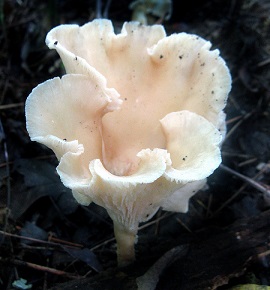
Cantharellus alborufescens
Likewise Cantharellus alborufescens, which is exceptionally pale, blushes effectively, and is found in mediterranean zones, is now and then recognized as a different assortment or a different species.
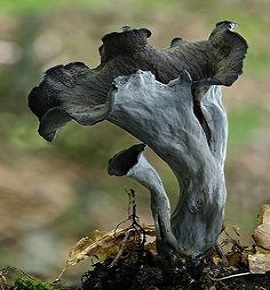
Craterellus cornucopioides
A dark relative of the chanterelle, Craterellus cornucopioides, is unjustifiably called "the trumpet of death." Don't trust it- - the dark chanterelle is heavenly. C. cornucopioides is hard to spell and to discover. Littler in size than the orange chanterelle, the tops are channel molded and empty the distance down to the base of the stem. It has been very much depicted as a dark petunia . Its dull top, dim underside, and its propensity for developing in dim spots under bushes make this cryptic mushroom a test to discover. There are a couple similarly consumable carbon copies.
ALBORU fescens
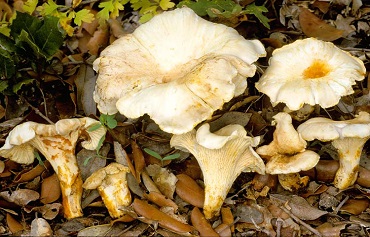
Likewise Cantharellus alborufescens, which is exceptionally pale
blushes effectively, and is found in mediterranean zones, is now and then recognized as a different assortment or a different species.
JACK O LANTERN
Jack-O-Lantern is viewed as a Chanterelle look-a-like. It is very noxious and ought not be mistaken for the chanterelle. Jack-O-Lanterns are most dependably genuinely vast with a 2 1/2-4 in. top or even much bigger. Most will be of comparative size when found. Chanterelles NEVER develop along these lines!
Jack-O-Lanterns have sharp edged gills and pumpkin orange shading. Chanterelles have gruff edged, forked, frequently wavy gills which tend to rundown the stem more. Chanterelles are exceptionally variable in size and generally more yellow shading. An adult chanterelle is on the privilege. Jack-O-Lantern develops in substantial groups with the stems connected together at the base (cespitose). The packs are frequently huge and found beneath oak and other hardwood trees. Some of the time they can be out in a garden where there is covered wood or roots. Chanterelles will never be found on gardens where no trees are available. Chanterelles don't develop along these lines. Ever.
Gomphus floccosus
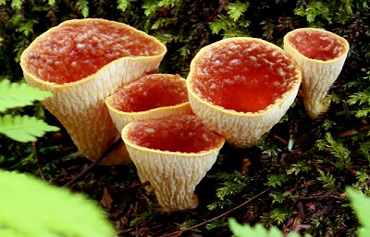
The Scaly Vase Chanterelle (Gomphus floccosus) is not a genuine chanterelle.
It is extremely thick with a textured orange top. Albeit some eat this one it ought to be maintained a strategic distance from. False Chanterelle ). False chanterelles (Hygrophoropsis aurantica have close sharp edged gills, more slender stems, felt-like (finely tomentose) top and frequently orangey cocoa tones. (above and right) Do not eat them.